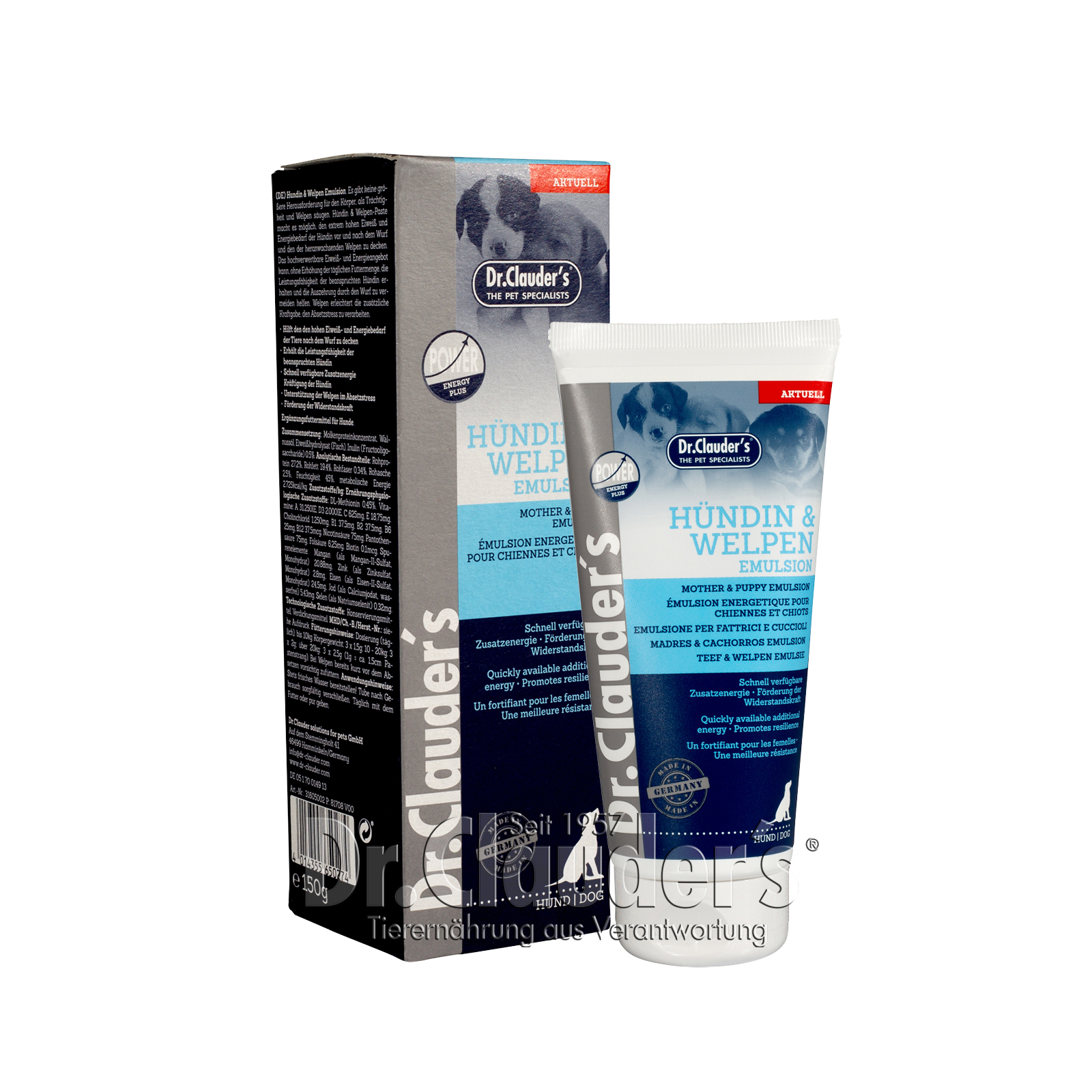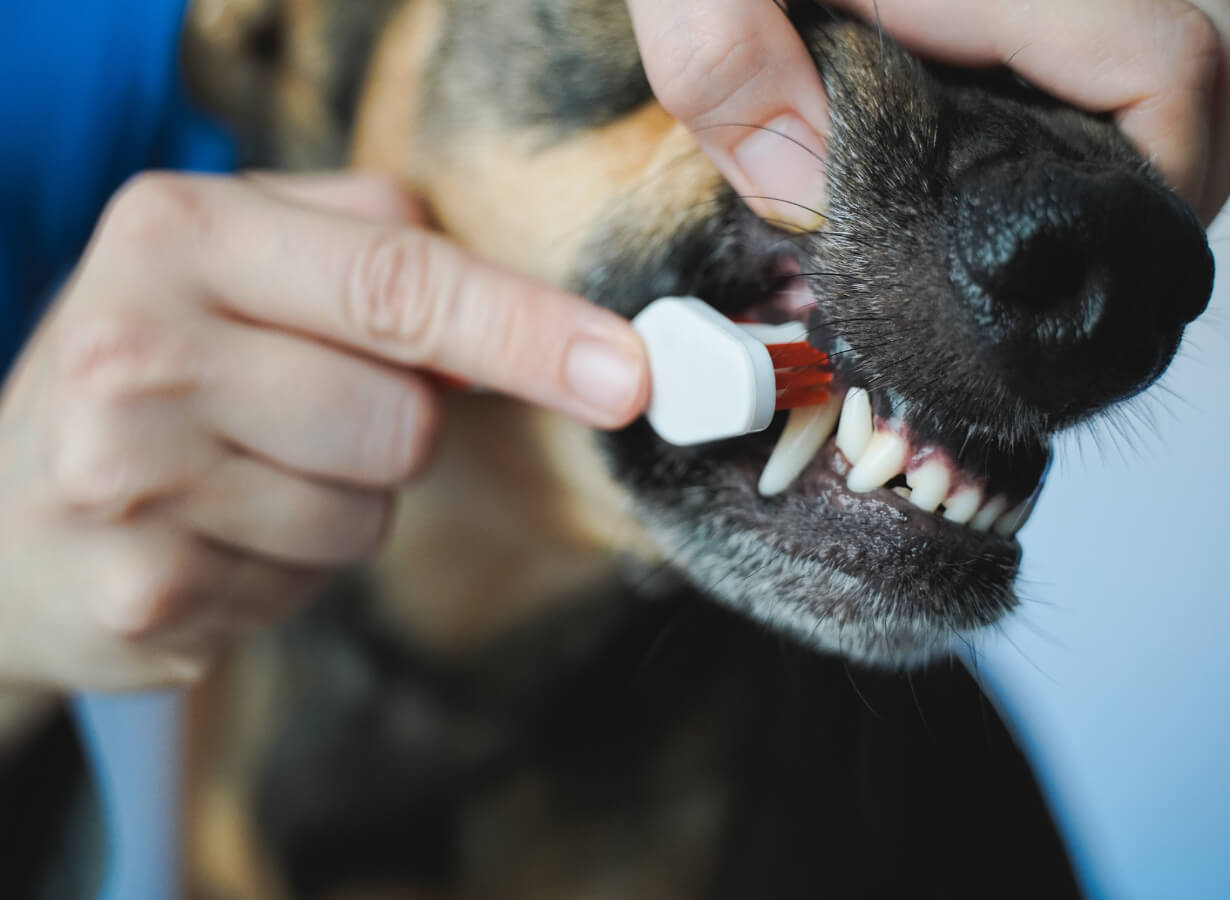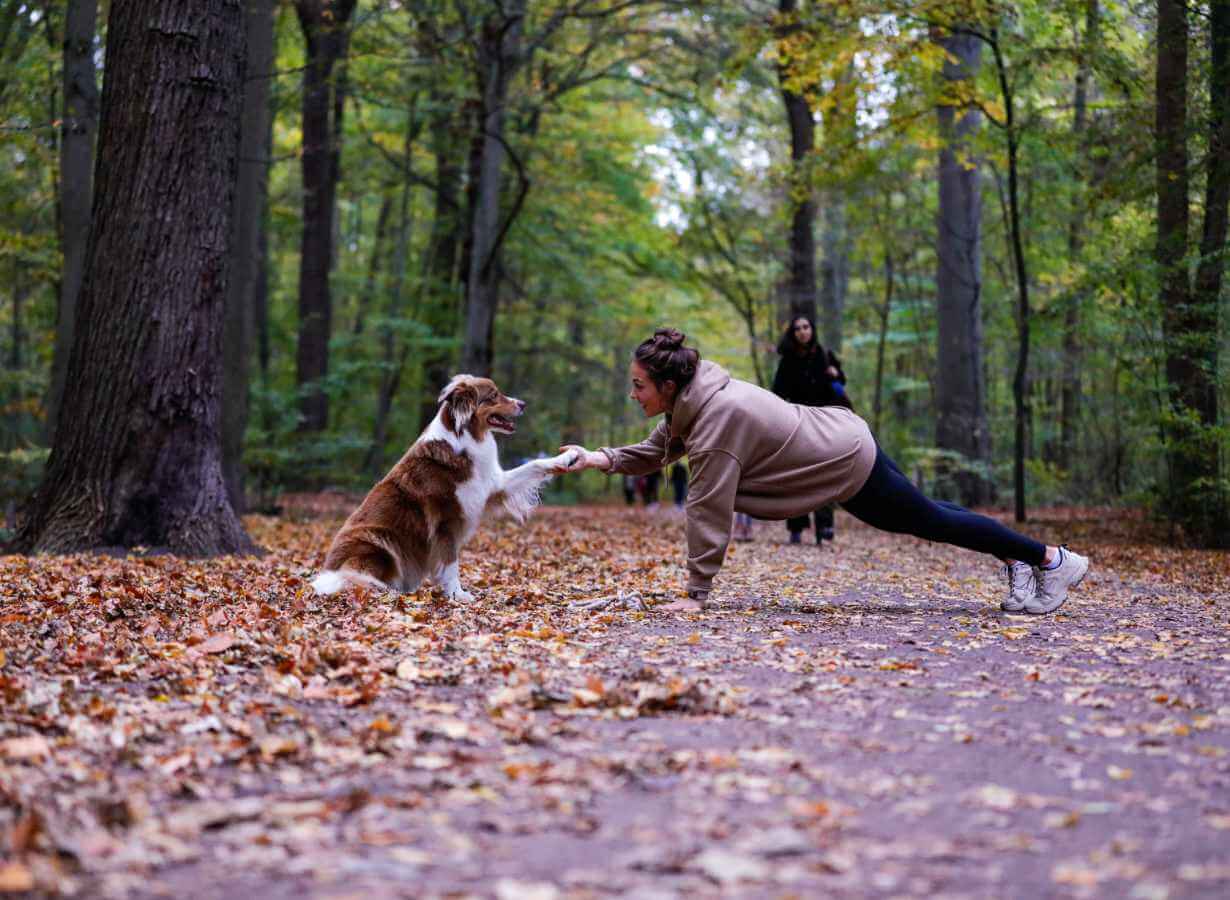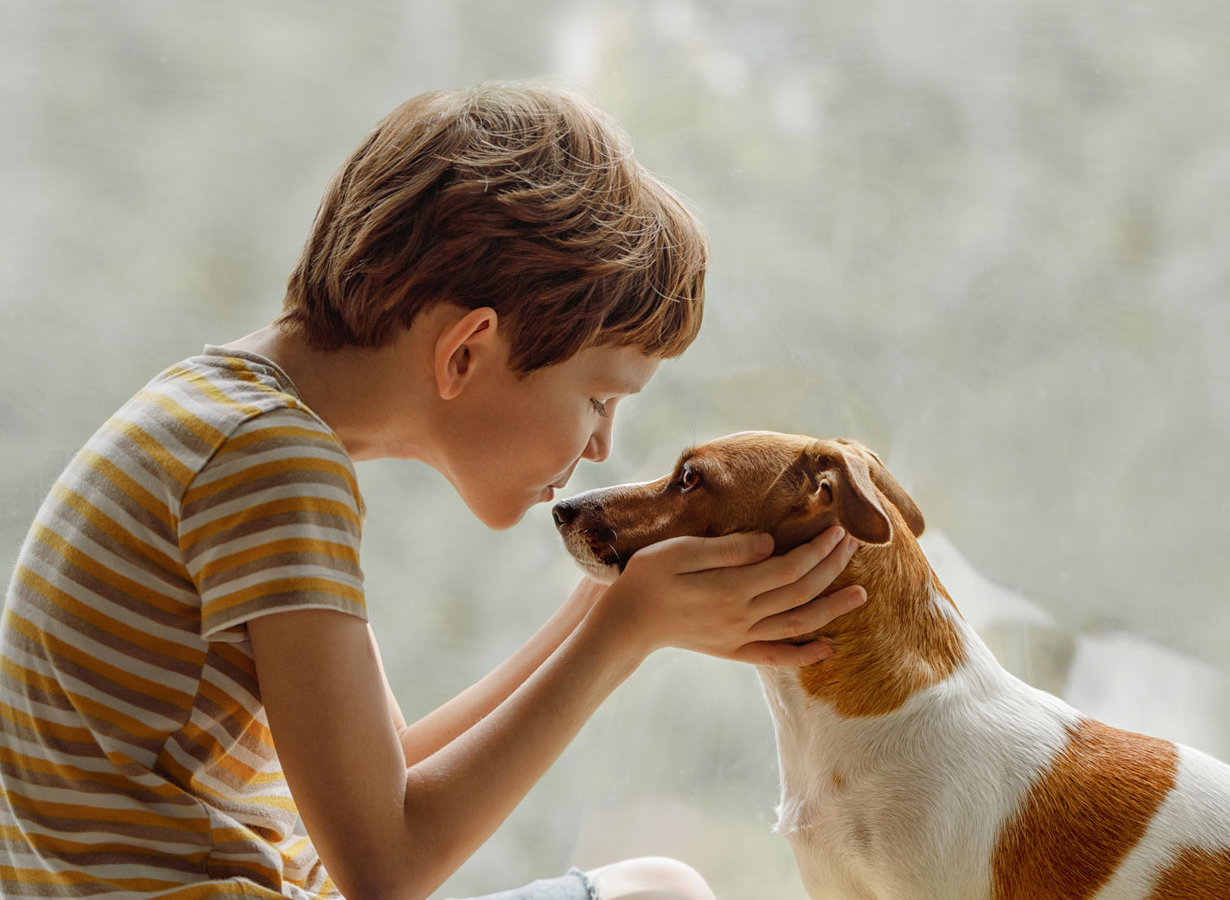Included in this article:
- Birth in dogs
- Signs of birth
- How you help
- Vegetative phase
- Transition phase
- Stamping phase
- Socialisation phase
- Bite inhibition in puppies
- Summary
- Product tips
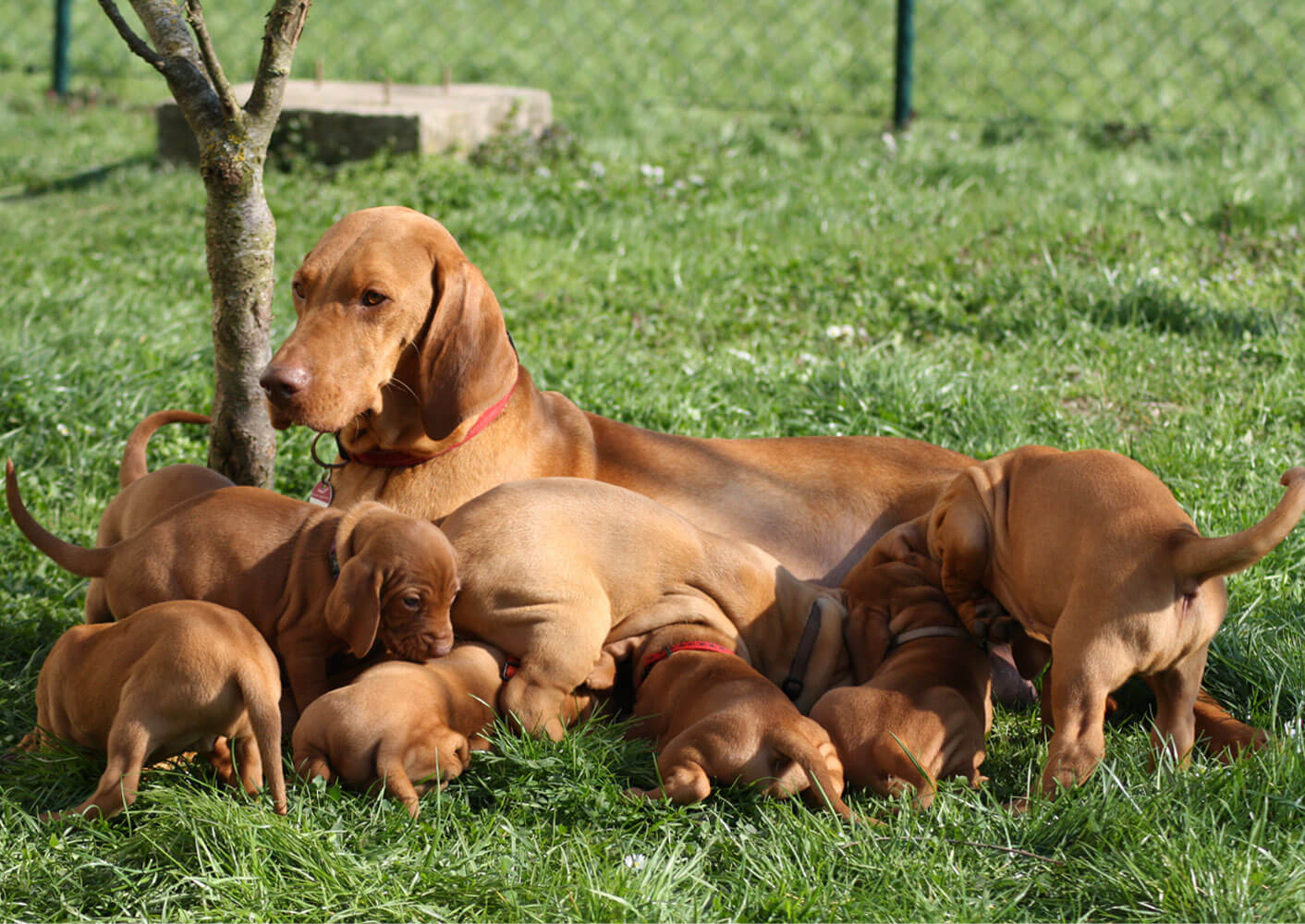
Little paws, big adventures: Puppies in their first weeks of life.
Is there anything more exciting for dog lovers than the pregnancy of a bitch? Without a doubt, the birth of puppies is an emotional and significant event: after about two months of gestation, the little pups are born and your everyday life changes radically.
What is the birth process like for dogs? Can you support your pregnant bitch during the birth? Is it necessary to have a vet present at the birth? What do you have to keep in mind when dealing with the puppies during the first weeks of life?
You will find the answers to these questions and more in the article.
Birth in dogs: What you need to know
Is your dog's due date approaching? No need to be nervous or worried. Your dog will usually be able to cope on her own. The average gestation period for a bitch is about 63 days. As the day of mating does not necessarily coincide with the day of fertilisation of the eggs, the gestation period can vary between 58 and 72 days after mating.
How can I tell if my dog is pregnant?
There are only a few signs that can indicate that your dog is pregnant:
- Swollen udder
- Change in appetite; initially it may decrease until the 3rd week of pregnancy and then increase by 30-50% from the fifth week until just before birth.
- Increased tiredness and decreased activity levels
Currently there are no home tests for dogs to detect pregnancy. Therefore, you should consult your veterinarian if you suspect pregnancy.
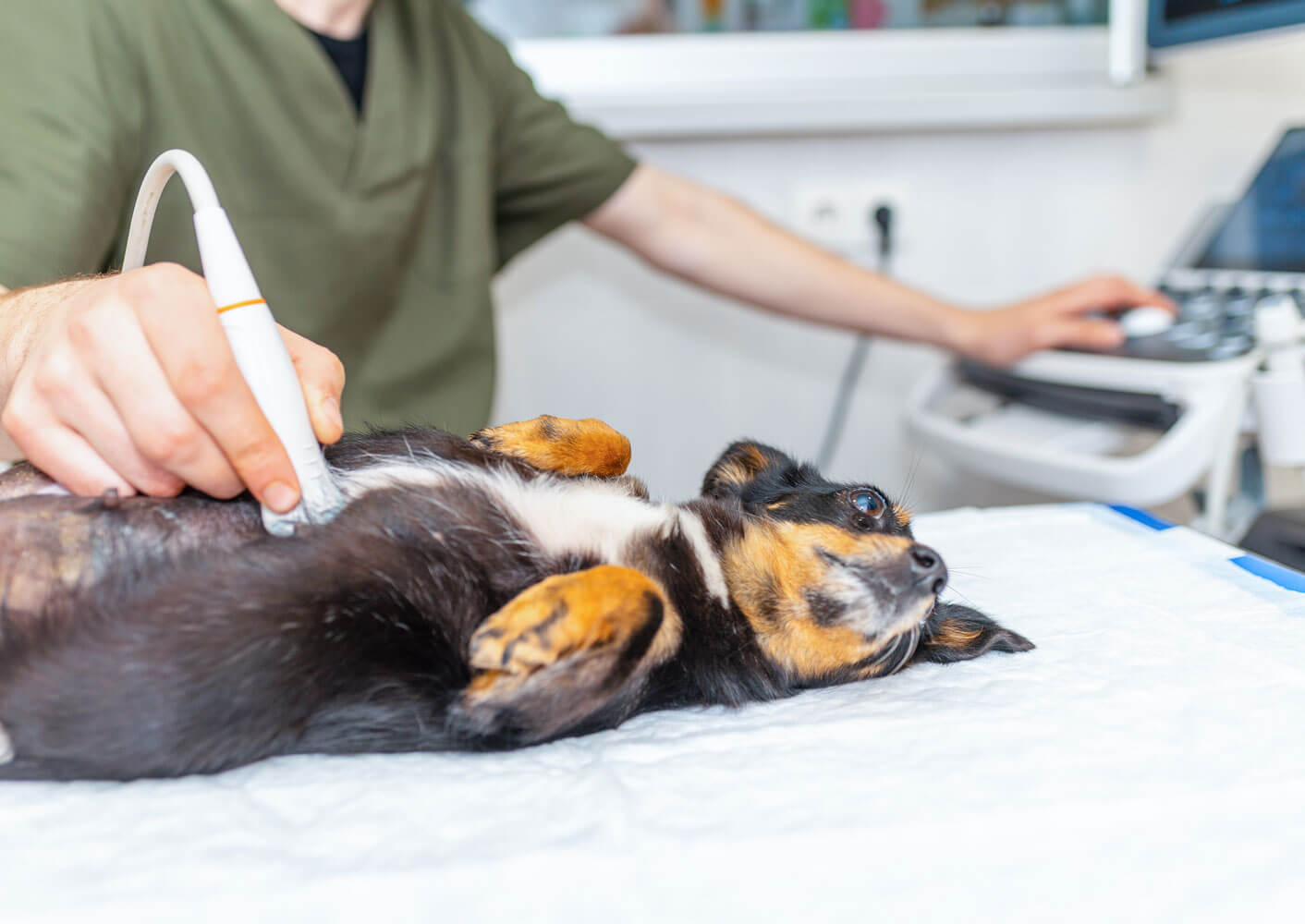
This is how pregnancy is determined
- Palpation:Palpation used to be the fastest way to confirm pregnancy. However, this method carries risks and should only be carried out by experienced veterinarians.
- Blood test:A blood test for the hormone relaxin allows a reliable determination of pregnancy. If the test result is negative, pregnancy is unlikely, but not 100% excluded.
- Ultrasound examination:From the 3rd week of pregnancy, unborn puppies can be easily detected by ultrasound. The vet can also check the quality and quantity of the amniotic fluid and the development of the puppies.
- X-ray examination:After the 7th week of pregnancy, the skeletons of the puppies are visible in the X-ray. Although uncommon today, X-rays can often determine the number of puppies better than ultrasound.
How to recognise that the birth is imminent
Shortly before giving birth, your bitch will change her behaviour significantly. These typical signs can appear a few days before birth and vary from dog to dog:
- Nest-building behaviour
- More frequent urination
- Restlessness and nervousness
- Lack of appetite
- Pawing around the birth area
- Increased clinging
- Increased licking of the vagina
- Clear discharge
- Panting and accelerated breathing
In many dogs, the body temperature drops by about one degree 24 to 36 hours before birth. When the opening contractions begin, the temperature rises again until it reaches its normal value during birth.
Good preparation is crucial
To prepare for the birth of the puppies, you should prepare a whelping box in advance in a quiet and warm place. This should be large enough for your bitch and her puppies, and allow easy access. You can find whelping boxes in pet shops or online. They are usually made of untreated wood or plastic. Alternatively, you can use a dog basket with a high rim. However, make sure it is high enough to prevent the puppies from falling out.
Also have the following ready:
- clean towels
- an infrared lamp to warm the puppies
- Fresh water
- twine and scissors to tie the umbilical cord if necessary
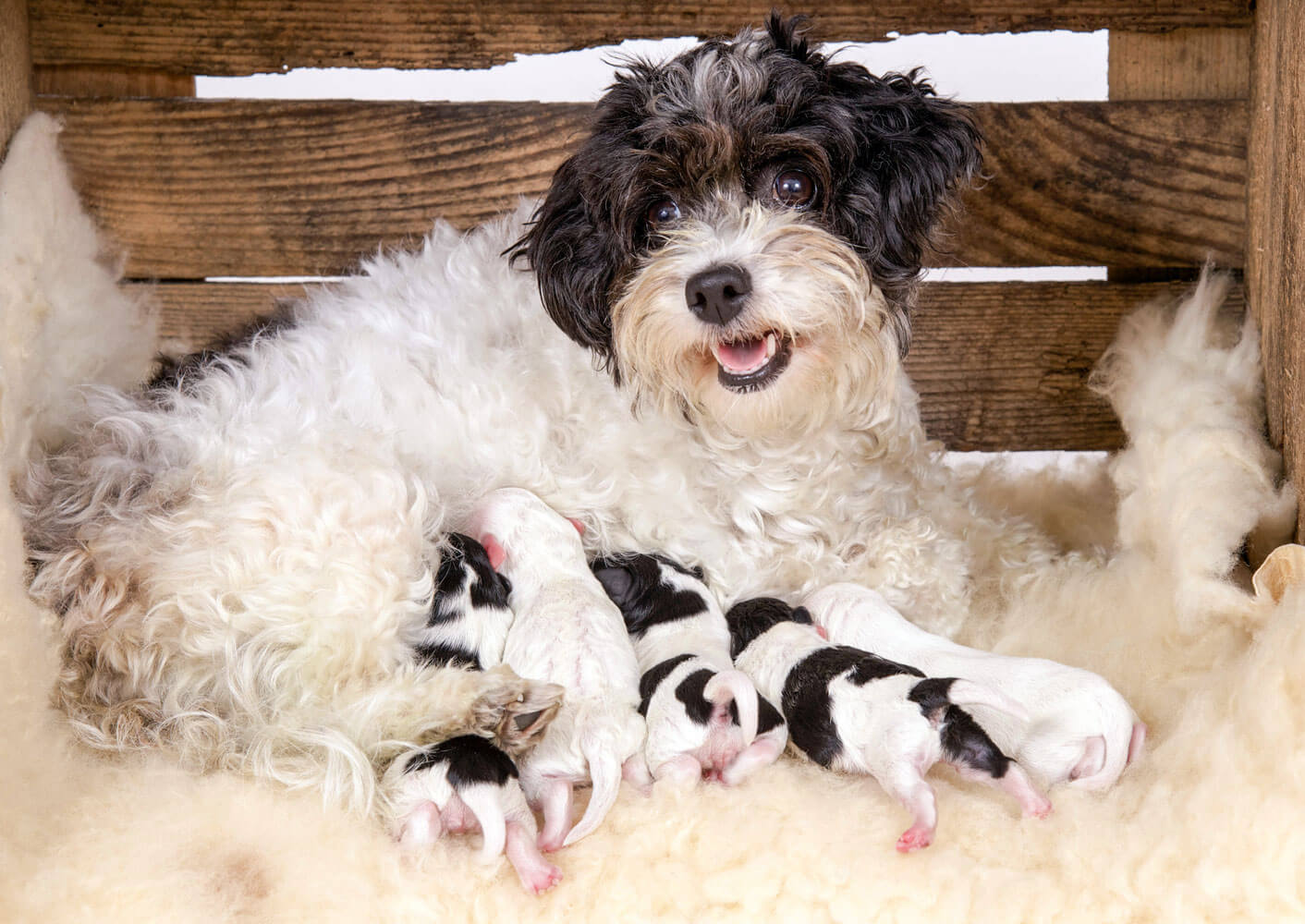
The puppies are coming!
How can you help your dog?
Normally, your dog will be fine without help during the birth. However, it is a good idea to be nearby so that you can intervene immediately and inform a vet if there are any complications. Complications include long pauses between births, heavy bleeding or signs of pain in the bitch. If everything goes smoothly, the most effective way to support your bitch is to remain calm.
Here's what else to do:
- If your bitch is giving birth to another puppy, you can help the puppy that was born before. Carefully pick him up, remove the remnants of the amniotic sacs and clean him with a warm, damp cloth. Rub against the grain to stimulate breathing.
- If necessary, clear the puppy's airway by inserting a clean finger into its mouth and cleaning the oral cavity and nose. Rub it a little more to make it make a sound and clear the airways.
- You may also need to cut a puppy's umbilical cord. Tie it off about 3 cm from the body and tie another knot a little further. Cut the umbilical cord between the knots.
- After the puppies are born, your bitch will need plenty of fluids and food, ideally the same as she had during pregnancy.
- Take your bitch outside so she can do her business in peace. Then clean up the whelping area: Remove soiled cloths and blankets and lay out new cloths so the puppies can lie clean and warm.
- Observe the puppies and check that they can find their own way to their mother's milk. If necessary, help them to reach the teats. If there are more puppies than teats, intervene in power struggles so that all puppies get enough milk.
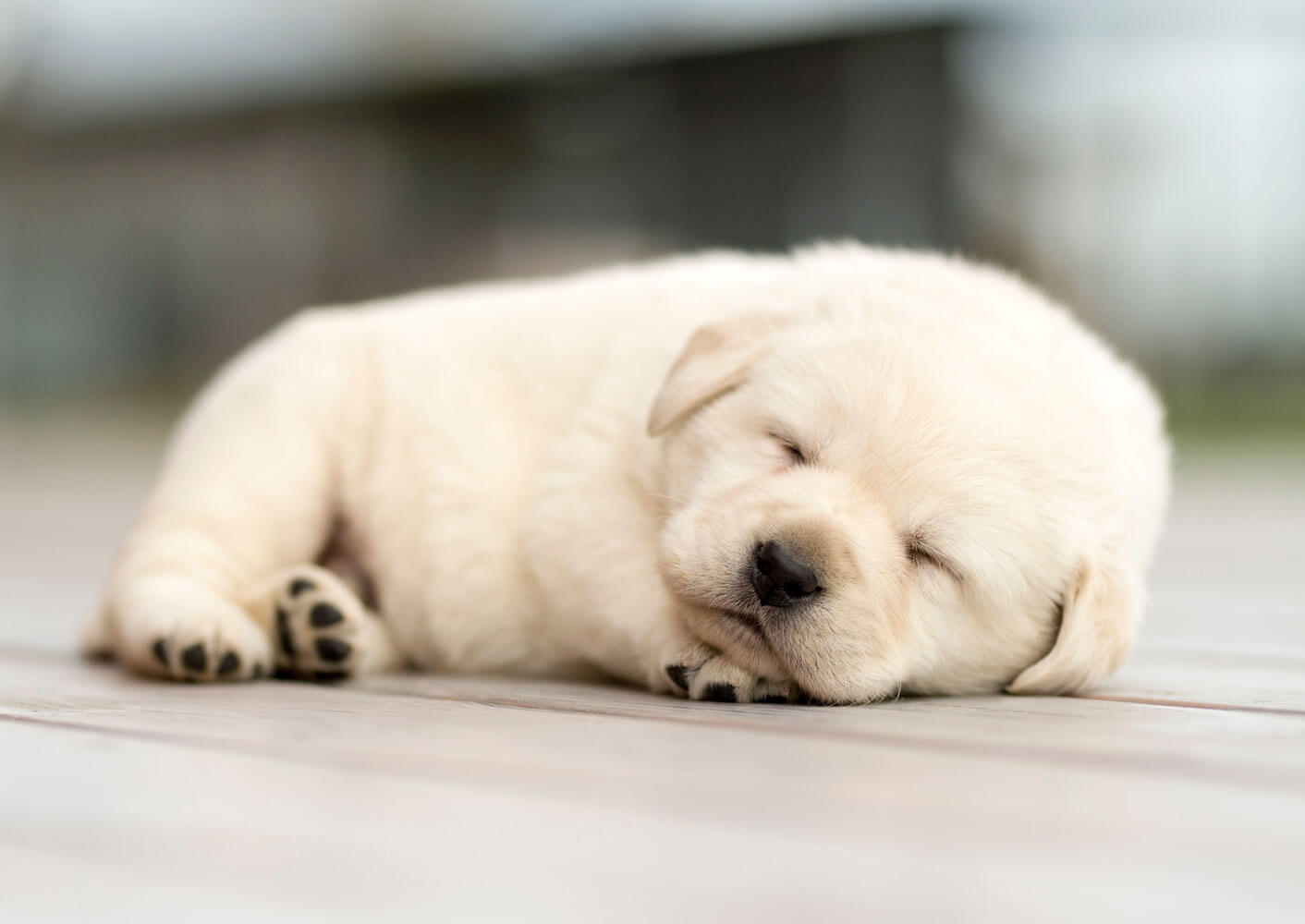
Vegetative phase: The first 2 weeks
Until at least the eighth week of life, the puppy should stay with its mother (i.e. usually with the breeder). Only in exceptional cases can an earlier separation take place (for example, if the mother is ill).
Early separation should be avoided, as the puppy learns a lot from its mother and siblings during this time. During these first weeks he goes through several important developmental phases.
Puppies spend the first 2 weeks of life sleeping almost 90% of the day and spend the rest of the time sucking. Their goal: to grow! The birth weight doubles within the first week.
The puppies first have to get used to life outside the womb. Their eyes and ears are still closed, which is why the little pelt-noses are particularly in need of protection during this time. Although they are still very young, puppies can already smell, taste and react to touch from birth. These senses are important for them to find their mother's fragrant milk glands.
Transition phase: The puppies become mobile
The third week of life marks the beginning of a transitional phase in which the puppy's eyes and auditory canals slowly open. Nevertheless, the little pelt-nose does not yet actively perceive its environment, because the ability to see and hear does not occur until about the 18th day.
The puppy begins to consciously make contact with its siblings and mother and to explore its surroundings. He now shows an increased interest in the world around him.
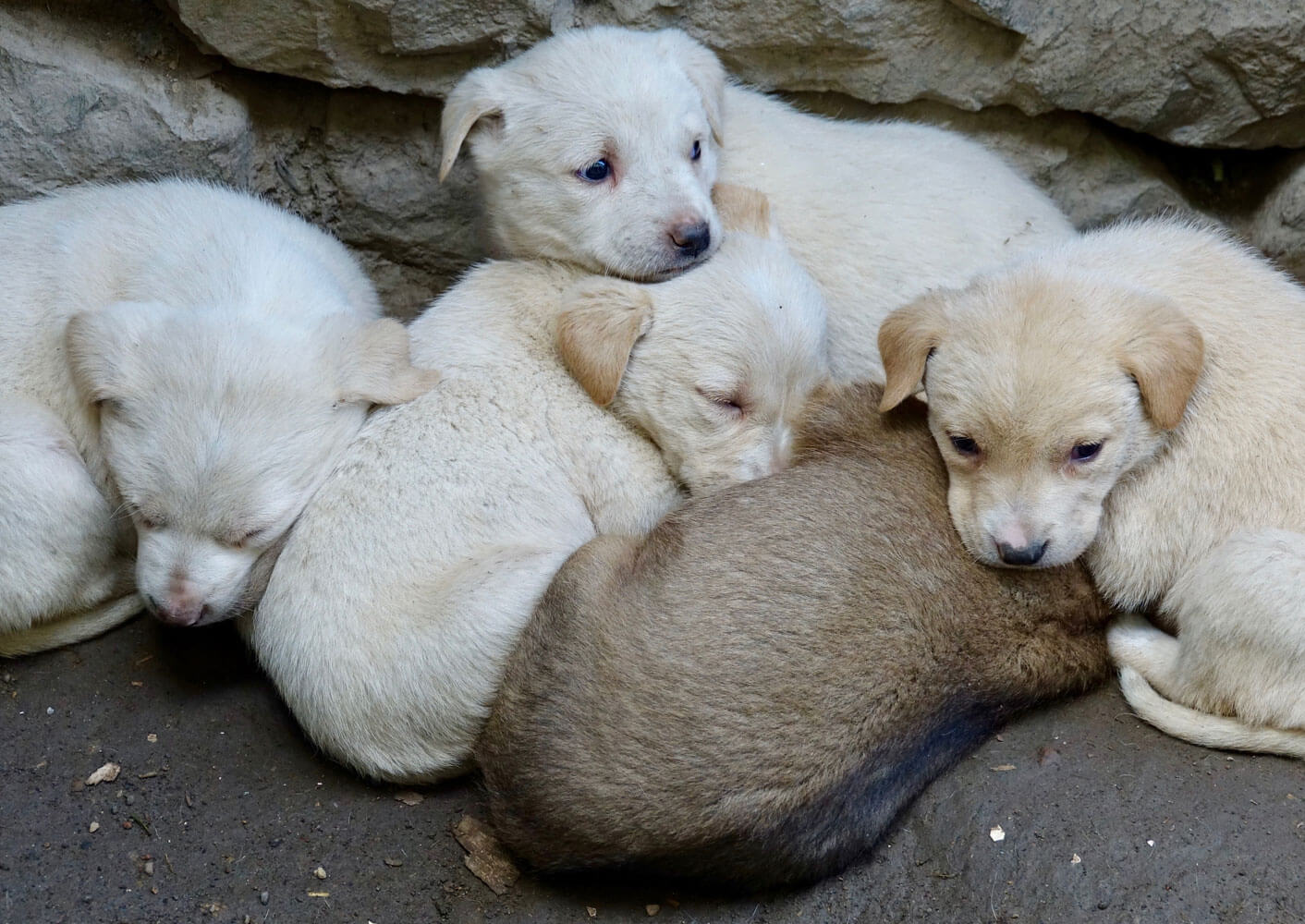
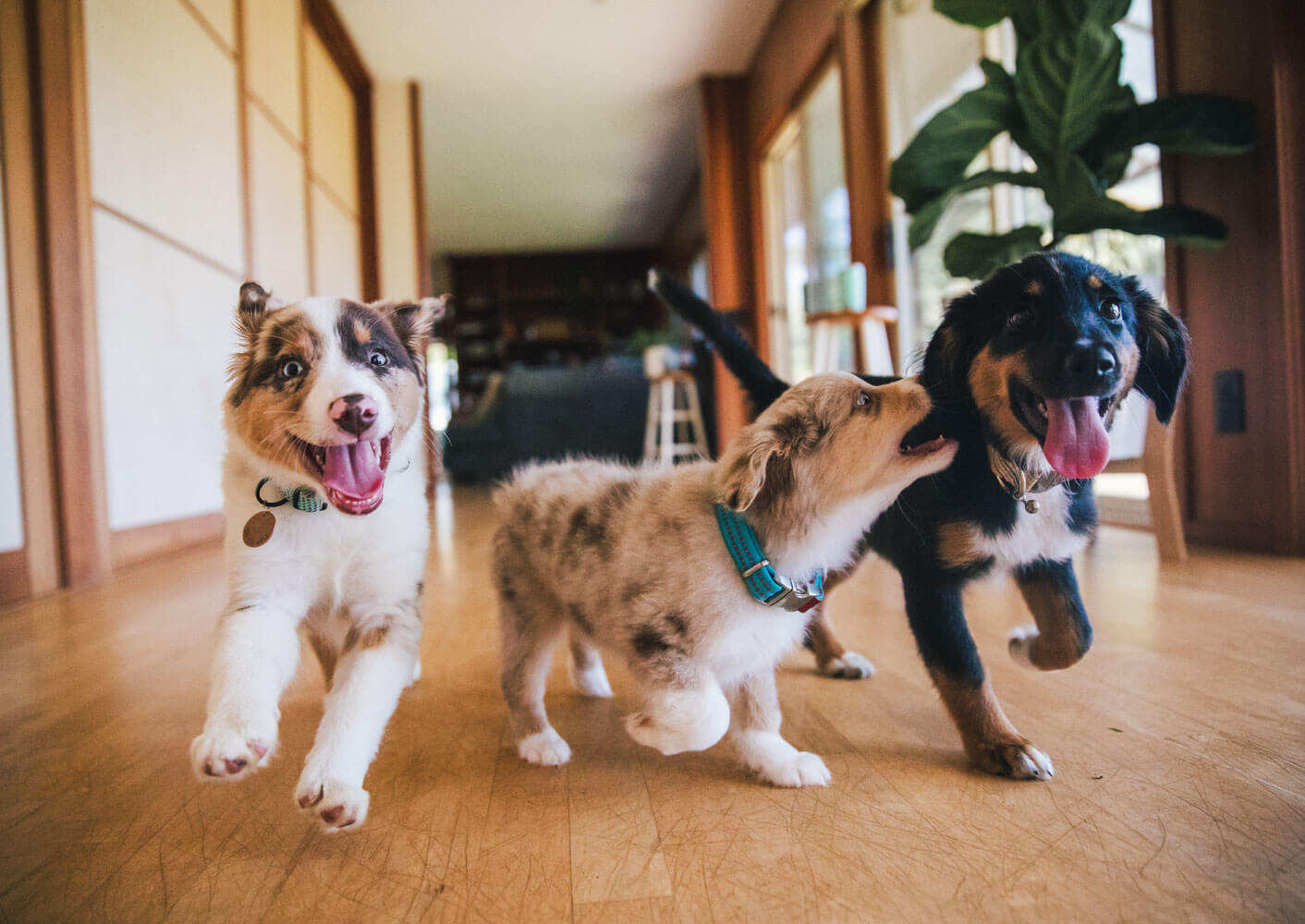
Imprinting phase: The puppy makes contact
The decisive imprinting phase occurs between the 4th and 7th week of life: The puppy actively uses its senses to explore its environment. Contact with people plays an important role - the puppy builds its first social relationships.
During the imprinting phase, so-called new"time windows" open up in the puppy's brain, in which experiences are linked with other experiences. These connections influence the behaviour of the animal for the rest of its life.
Good breeders make sure that puppies get to know as many different stimuli as possible during this phase - for example, other dogs, animals, people and noises, in order to be fear-free and secure later on. It is therefore important to choose the breeder consciously and to make sure that the puppies have had the best possible imprinting. In this way, you as the owner lay the foundation for a happy human-dog relationship.
Socialisation phase: Out into the big wide world
A puppy moves from the breeder to its new owners - its family - at the earliest from the 8th (better from the 12th) week of life. At the same time, this transition to the new living space marks the beginning of the socialisation phase, which lasts until the twelfth week of life.
In this phase, puppies have to experience and try out everything they have learned so far. Within the dog family, puppies enjoy a lot of freedom until the end of the imprinting phase. With the beginning of the socialisation phase, however, this changes abruptly and the education of the puppies begins.
This education is absolutely necessary, as they will later have to integrate successfully into the pack. Older dogs now set clear boundaries, establish taboos and enforce them with disciplinary measures. Puppies spend this important time in their lives with their humans, which is why consistency in upbringing is a top priority.
Encounters with people, animals and new impressions are crucial in a puppy's socialisation phase. Getting used to people is one of the most important lessons during this time.
Make sure that the first contact between strangers and the puppy is made by you, so that the puppy does not feel harassed or invaded.
Positive experiences, such as a fun game or extensive petting, will be enjoyed by your little pelt-nose. Equally important is contact with well-socialised peers. The young dog should - under controlled conditions - get to know different situations and gather as many positive experiences as possible.
My puppy bites - what now?
Exploring the world with their teeth is a normal phase in puppies' development. Even before their eyes and ears are open, young dogs gain experience with their mouths, for example when looking for milk from their mother.
Later, when the milk teeth have grown, puppies learn to use their teeth carefully in play with their siblings. In a responsible breed, your little four-legged friend will grow up with his mother and siblings. Here he learns to controlhis teeth in anatural way from the 4th week of life .
Through playful learning, he learns the consequences ofbiting too hard. The mother then refuses him access to the milk or the siblings stop the game with a yelp. This way he understands that he has to be more careful.
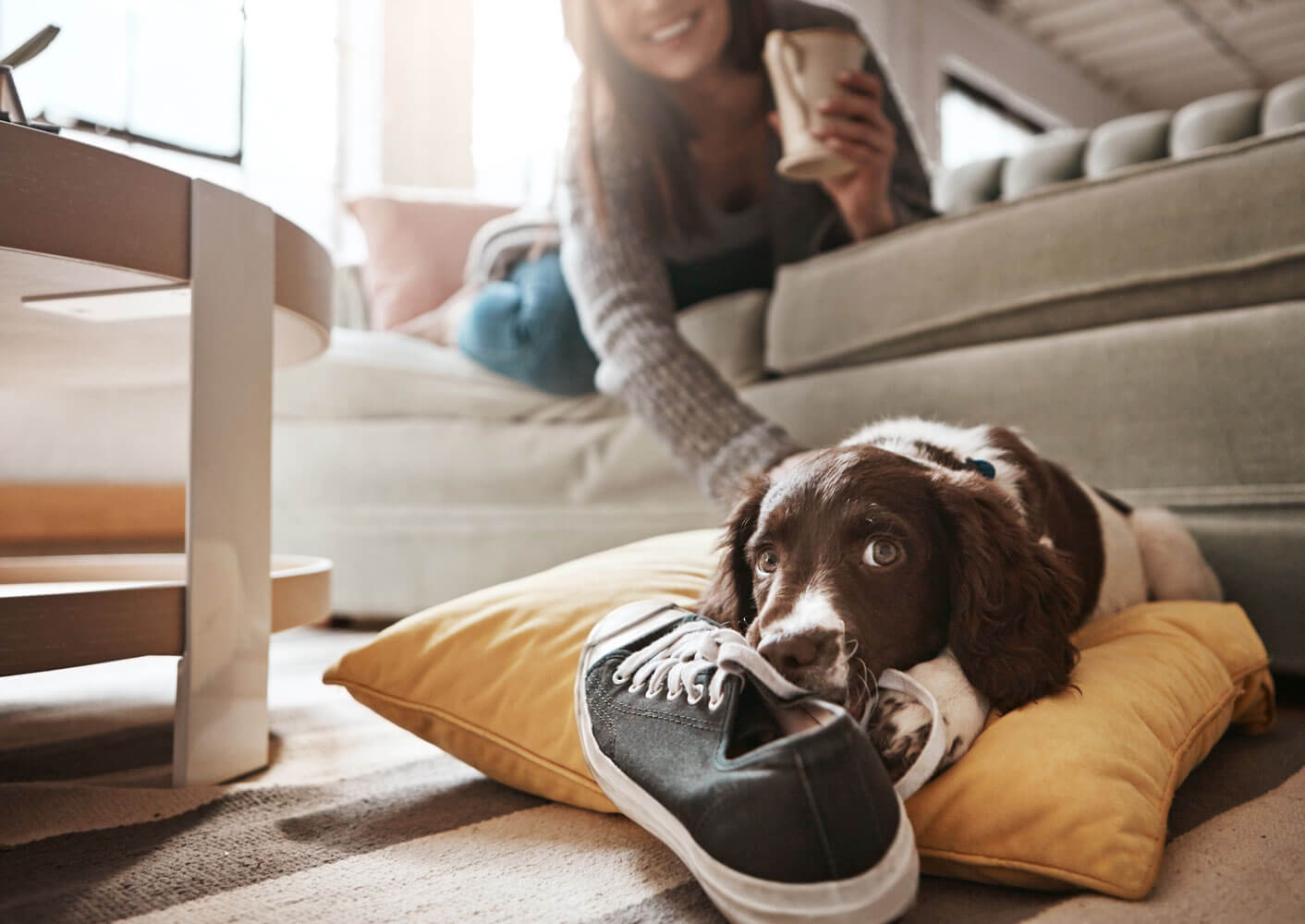
During play , your puppy will often bite your hands, legs or feet. In general, it makes sense to forbid your four-legged friend from snapping during play. Otherwise he could use it later as a reprimand against you if he doesn't like something. You should also quickly put a stop to tugging and biting at clothing. Be consistent as soon as your puppy bites too hard or doesn't want to stop.
- Establish a stop signal if your puppy goes too far, e.g. "No", "Off" or "Ouch".
- React immediately if the game gets too wild, for example with the stop signal.
- Stop the game if your dog bites or snaps.
In play and in everyday life you always have the opportunity to train the so-called "bite inhibition" with your puppy. By being alert and stopping even small signs of a hard bite, your four-legged friend will understand the principle after a few days.
If he continues to bite, the following methods can help:
- Offer your little pelt-nose a chew toy as an alternative.
- Put him in a box so that he can rest - important: no punishment, but rest time.
- If in doubt, get support from a dog trainer.
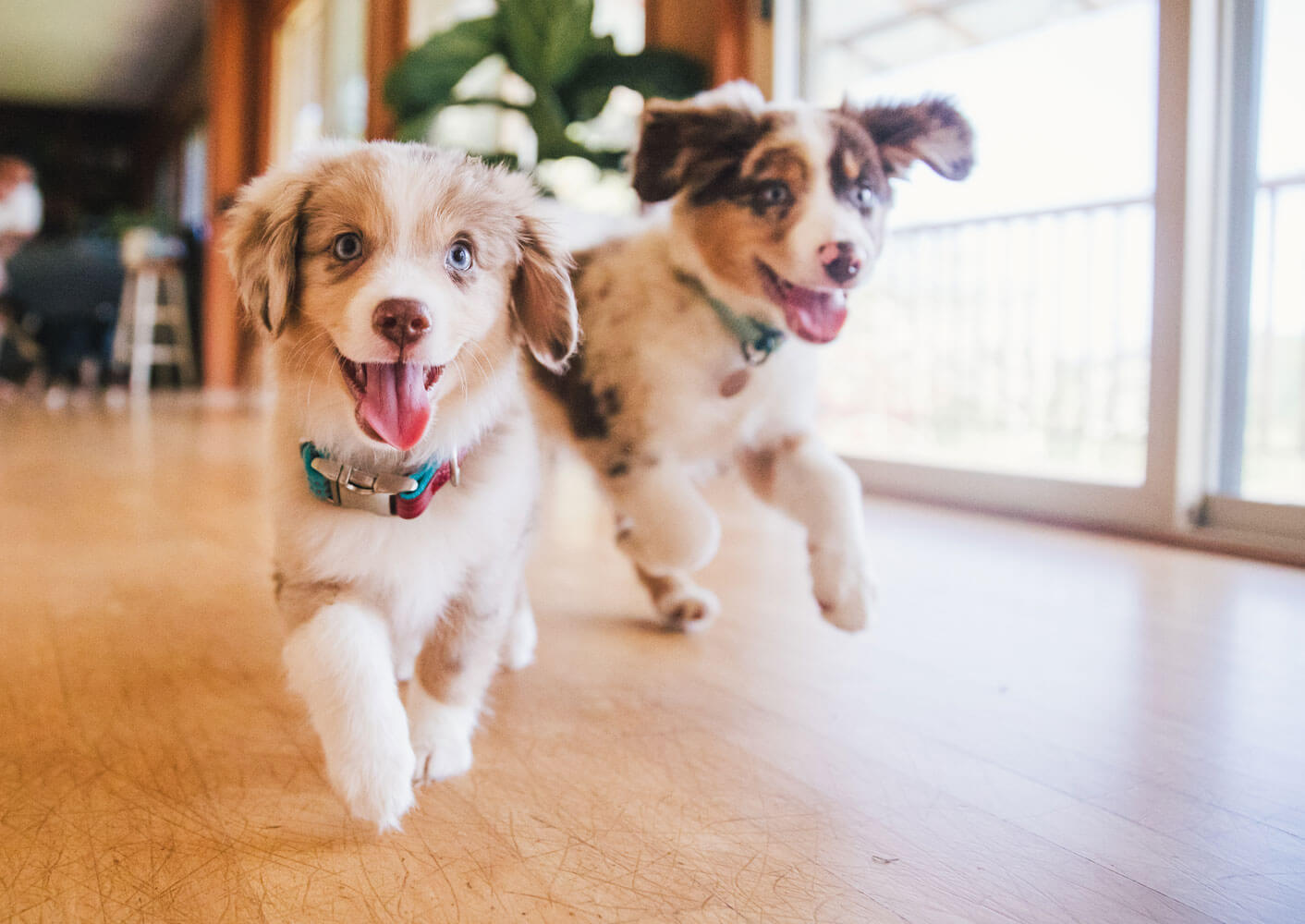
Briefly summarised: The learning phases
The duration of each learning phase is variable and differs between breeds and individual dogs. While the first six months are similar for most puppies, the breed heritage becomes clearer from the puberty stage onwards.Puppies learn continuously and quickly untiladulthood. The different phases merge seamlessly, so you don't have to wait for a specific time to teach your puppy something.
Itis important, however, that you do not suddenly changeyour behaviour: every dog is individual. Some puppies are more curious and learn faster, while others are shy and need more time.
Watch your dog to see when it is time to extend the training. Don't overtax him, but don't overprotect him either. Over-protection is harmful as the dog needs to learn how to cope in society.
Short training sessions are ideal for reducing fears and familiarising the dog with new impressions. Introduce your little four-legged friend to its environment at an early stage so that it perceives it as familiar and normal and goes through life calmly with you.
Dr.Clauder's for healthy dog mums and puppies
There is no greater challenge to the body than pregnancy and nursing puppies. Bitch & Puppy Paste can help meet the bitch's high protein and energy needs before and after whelping and those of the growing puppies. Bitch & Puppy Paste+ replaces the mother's milk for the puppies, gives strength to the nurturing bitch or strengthens old or weakened animals.

